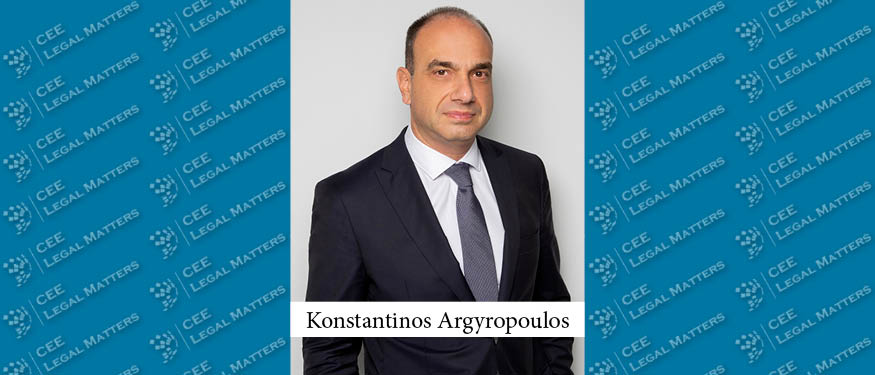The law firm wings of the Big 4 accounting firms have been growing steadily and then remarkably for the past few years, approaching – and in some cases surpassing – the sizes they had reached before the Enron bankruptcy and subsequent creation of the Sarbanes-Oxley regime knocked them down more than a decade ago.
This resurgence is obvious in CEE as well, and the confidence among and optimism of the regional heads of the Big 4 legal practices suggest that their time, this time, has come.
Never Say Die
“This year any coyness about the Big 4 returning to law has been lifted. They are all at it again.” – Warren Riddell of Beaton Capital
The accounting firms have tried this before, of course. In 1993 Arthur Andersen became the first of the then Big 6 accounting firms (the others being Deloitte & Touche, KPMG, Coopers & Lybrand, Ernst & Young, and Price Waterhouse) to introduce a legal services arm (Andersen Legal), and PWC and several others followed soon thereafter. At its height Andersen Legal, with over 3,400 lawyers, was the largest law firm in the world, with KLegal – the law firm arm of KPMG – third largest, with 3,000 (Baker & McKenzie, with 3,053, was between them). KLegal led the accounting firms in reach, with operations in 60 countries.*
According to Eric Chin of Beaton Capital, “the numbers illustrate the ease with which the accounting goliaths were able to expand, not beholden to jurisdictional constraints because of their already-global audit and advisory practices.”
The traditional international law firms, a lawyer around at the time remembers, “were scared shitless.”
Then it fell apart.
Enron’s famous collapse in 2001 famously resulted in the 2002 Sarbanes-Oxley Act in the United States, which, among other things, restricted auditing companies from providing non-audit services (e.g., legal advice) for the same clients. It also, famously, meant the end of Andersen. The remaining global accounting firms – PWC (Price Waterhouse and Coopers & Lybrand had merged in 1998), KPMG, Ernst & Young, and Deloitte – unwilling to see their core accounting businesses threatened, downsized, downgraded, and de-emphasized their legal teams significantly.
Unlike in the United States, however, in Europe by and large the now Big 4 kept their law firm arms active, though unostentatiously, and contented themselves in the main with small deals and supplementary services rather than leading major transactions.
The global financial crisis that started snowballing in the final months of 2007 ironically opened the door for the Big 4’s law firms to return to the scene. First, the distinction between the Big 4 and the international law firms began to blur, as the international law firms began expanding their own advisory services in a strenuous attempt to find new sources of revenue. Second, the seller’s market became a buyer’s market, and the ability of the Big 4 to bundle and combine legal, tax, and advisory services into a one-stop-shop package, providing international quality from recognized brands while taking advantage of efficiencies of scale and global experience, became ever more attractive.
And indeed, their growth has been remarkable. PWC is now the largest of the Big 4 worldwide, with 2,400 lawyers in 83 countries (Baker & McKenzie, now the largest firm in the world, has slightly over 4,200). Leon Flavell, the global head of PWC Legal, has declared his intention to be a top 20 global legal services business in five years, with a target of USD 1 billion in revenue – a little more than double the firm’s 2013 mark.*
Although KPMG Legal is the smallest of the Big 4 legal practices, with 1,000 lawyers in 45 countries, Dariusz Dobkowski – a member its Global Steering Committee – also expects his organization to become a USD 1 billion business by 2020. Dobkowski reports experiencing 30% annual growth, so – he says – “those ambitions and plans are relatively easy to come true.”
Deloitte Legal now has 1,300 lawyers in 56 countries, reflecting an increase of about 250% in headcount (and revenue) in five years, according to Jan Spacil, the Head of Deloitte Legal Central Europe.
And Ernst & Young, which had law practices in only 30 countries just a few years ago, has 1,100 lawyers in 52 countries today, with a stated ambition of 70 in the near future.
They’re Baaaaaaack! (CEE Version)
The markets of CEE bear witness to this resurgence. And the regional leaders of the Big 4 law practices are delighted to be at the center of it.
Michael Mullen – CEE Legal Leader at PWC Law
Mike Mullen’s decision to become CEE Legal Leader at PWC Law is as good a sign of the Big 4’s increasing cachet as any. Mullen, an American lawyer, worked with Altheimer & Gray in Chicago, Istanbul, Budapest, and Prague, then with White & Case in Prague, before joining Havel & Holasek – the Czech firm then associated with Deloitte – in 2002, becoming an Equity Partner in 2003. He left that firm after 10 years to lead PWC Law in CEE in January 2013.
According to Mullen, PWC currently has 290 lawyers in CEE (a region which PWC defines as extending as far as Mongolia in the East but not to include Greece, Austria, or Turkey), making it, already, “one of the biggest law firms in the region … and by far the biggest of the Big 4.” He reports that the revenue of the firm’s CEE business has grown by over 30% in the past 5 years. And PWC is hardly satisfied: “We are making a significant investment in Poland, and we hope to add 10 lawyers there by the year’s end. Likewise, we have recently formally created new law firms in Lithuania and Latvia. By the first quarter of next year we should also be opening new law firms in Croatia and Macedonia.”
Mullen also notes with pride that the firm’s Moscow office is highly ranked in global directories – the only one of the Big 4 to have reached that level.
The reason for the resurgent Big 4 legal practices, Mullen believes, is that they already possess “the gold-standard brand.” The Big 4 have, he believes, “all the internal procedures, global perspective, and international best practices … whereas local firms often have a different business model.” In addition, in some of CEE’s smaller markets, the Big 4 are among the few international alternatives to local firms, providing an assurance of international standards of quality in markets where those qualifications are rare.
Ultimately, he says, PWC Law not only provides an essentially full range of legal services but can bundle them with other, more traditional PWC services as well. Thus, in Mullen’s words, “it’s not just full-service – it’s more than full service, because we also can do tax, corporate advisory, etc.”
Jan Spacil – Head of Deloitte Legal CE
Jan Spacil’s experience with the Big 4 law firms goes back to the first boom. The Czech lawyer started in 1997 with Coopers & Lybrand, which merged with Price Waterhouse a year later. In 2011, he moved with his entire team from PWC to Deloitte (clearing the way for Mullen to move from the firm formerly associated with Deloitte to PWC), to head the Deloitte Legal “CE” practice (a region which includes the traditional CEE markets, with the exception of Austria, Greece, Turkey, Russia, Belarus, and Ukraine). At the moment, Deloitte has lawyers on the ground in 14 of the 18 markets Spacil covers, though not Bosnia & Herzegovina, Macedonia, Montenegro, and Moldova.
Spacil’s move to Deloitte Legal was part of a multi-fold expansion of the firm in the region, as the firm grew from around 50 lawyers to nearly 200 over the past 5 years. During that same period, Spacil reports, the firm’s revenues in the region tripled. And increasingly, like PWC, the company is starting to lure highly-regarded lawyers from international law firms, most recently with the November 2014 addition of Reneta Petkova in Sofia, the former Managing Partner and Head of Banking & Finance at CMS in Bulgaria and the former Head of Legal at United Bulgarian Bank.
In Spacil’s opinion the success of each member of the Big 4 in the legal area benefits them all. “I don’t see other Big 4 as our competitors,” he says, “and when I see that they’re successful I’m happy about it. Our competition is really the others. If PWC is successful, for instance, that means they’re persuading the market that the Big 4 can handle it.”
Spacil believes that the resurgent growth of Deloitte Legal represents, at least in part, a strategic initiative from the global executive, of which he is a member. “We want to be a one-stop shop – not only tax and legal, but also consulting, risk services, financial and transaction advisory and others.” He says Deloitte Legal’s explosive growth, in addition to a changing market, “is really based on a global decision. Deloitte is everywhere. So if you want to establish a legal practice, all the infrastructure is there. You’re not starting from scratch. Clients and referrals are already there.”
He laughs, hearing himself talk. “It’s not as easy as it sounds. You need to deliver results.”
Trevor Link – Law Leader Central and SouthEast Europe at EY
Trevor Link was a Tax Partner at Arthur Andersen for 11 years, working in Kazakhstan, Hungary, and Russia. He moved to Ernst & Young in 2002, where he worked for another two years in Hungary, Slovenia, and Croatia, and in 2006 he became a Tax and Legal Partner, working for the next 8 years in Ukraine and Bulgaria. In July of 2014 he became the Law Leader Central and SouthEast Europe at EY, overseeing 100 lawyers in the 22 jurisdictions that fall within his purview (“Central and SouthEast Europe”, like Deloitte’s “CE”, does not include Ukraine, Russia, Belarus, or Austria, but unlike “CE” does include both Cyprus and Malta). EY does not at the moment have practices in Serbia, Croatia, Slovenia, Latvia, Slovakia, or the Czech Republic, but Link expects them to be up and running by January 2016 (with the Slovak office expected to open in January, 2015). Although Link is quick to clarify that EY is itself present in all 22 jurisdictions, he says the organization “does not currently envisage adding law” in Montenegro, Macedonia, Bosnia, or Kosovo.
Link says the rapid growth of the legal practice at EY ( a term he prefers to the officially disfavored “EY Law”) in the past few years isn’t expected to stop anytime soon, and he suggests that the number of lawyers EY has in the region “could easily double given the things we’re doing within 1-2 years, and within 3-5 years it could be 3 times that.”
Like the others, Link draws a line from his organization’s existing infrastructure and client base to its success. He explains that, “as people get used to being able to add law as part of the multidisciplinary proposition that we offer, the more they want to use it. It’s a very attractive proposition for clients, so it is an area – despite difficult times for lawyers across the region – where we do see growth, and where we think that as some other, more traditional law practices retrench a little bit from the region, we may be a suitable home for some of those to move forward. Because we’ve got the infrastructure and the client base, so we may be able to grow even in times which are challenging generally across the region.”
In addition, Link believes one of the greatest assets of the Big 4 law practices is their ability to accept smaller mandates. “Whereas some of the big name international firms were only interested in the very big ticket transactions,” he says, “we’re more about long term relationships with clients, rather than deal base, and therefore we’re quite happy to do small things for a client, and hopefully when something larger comes along they will also consider us for that as well. In order to succeed in this we have to have the same high quality lawyers that the best firms in the region have. I think there’s room in the market for all the different size propositions, from the big name international law firms, multidisciplinary practices like our own, and all the various local firms, national firms, regional firms. They all offer something different, and it’s in the interest of the market that there is choice.”
Like both Deloitte and PWC, EY has started attracting lawyers from major international firms: Ivan Varga, a senior transactional lawyer from White & Case, joined EY’s rapidly growing practice in Hungary, and Zuzanna Zakrzewska recently moved to EY in Poland from CMS, where she had spent the previous 15 years. This, too, perpetuates the practice’s growth, according to Link. “When you bring in a lawyer who’s recognized, it becomes attractive for other people,” he says. “It sort of cascades.”
Zakrzewska remains enthusiastic about the client-centered focus of EY. She says: “Here I can work in multi-disciplinary teams. It’s very business-forward. Helping businesses develop business solutions. We can do both business advising and legal. At the end of the day the client is provided with one product, with everything included.” She elaborates that: “To be honest it’s much easier for the client if he comes to one place. I think these days packaging all this into one is in line with the trends. The global trend is in everything. You want to have everything in one. Just click and it’s done.”
Zakrezewska concedes that at this stage Ernst & Young doesn’t really have the capacity to compete against the big international law firms for major M&A deals. “Currently we have 25 lawyers,” she shrugs, “compared to – for instance – CMS’s 130. Therefore, so far it’s not our purpose to compete on the big deals. We do assist on the other side, however – pre-deal or post-deal restructuring – but not in the center in major M&A deals.”
Dariusz Dobkowski – Head of CEE Legal Steering Committee at KPMG
Dariusz Dobkowski also started at Arthur Andersen, in 1990, before joining KPMG in 1994. He is now both the Head of the CEE Legal Steering Committee and a member of the Global Legal Steering Committee at KPMG. Dobkowski’s region includes over 100 lawyers at the moment (roughly a 40% increase over the number several years before), working in 18 jurisdictions, including the Baltics, the Balkans, Bulgaria, Moldova, Romania, Hungary, Slovakia, Czech Republic, Poland, and Belarus.
Dobkowski is bullish on KPMG’s prospects going forward, noting that, “Legal business is one of the fastest growing sectors we have, with 30% growth worldwide in the last year, and almost the same in CEE: 27.5% in terms of revenues and 27% in terms of headcount.” The growth, he believes, is a result of the fact that “we’re getting better and better organized both on the domestic and international levels than ever before.”
In particular, Dobkowski believes KPMG’s creation of separate legal entities – fully-fledged law firms under the KPMG brand – has made them “more and more visible to the public.” He agrees that other factors are involved as well, “but as long as the clients do not see you, you can’t help yourself.” As a result, he says, “year by year we’re starting to raise the number of stand-alone KPMG legal practices. At the moment [we have them] in Poland, Czech Republic, Slovakia, Romania, Bulgaria, Estonia, and Croatia. Hungary is the hole in the map, but that’s going to change soon.”
And Dobkowski insists that, especially in countries like Poland – KPMG’s largest law office, with 45 lawyers – the Czech Republic, and Romania, “we compete with everybody on the market, from Magic Circle firms to well-established Polish firms, not to mention the other members of the Big 4.”
While Dobkowski declined to identify specific recent lateral hires of note, he said that “the beauty is that we are advanced legal practices, so to some extent ‘next-level’ law firms that add business acumen and integrated services to the traditional legal business. Our motto is, ‘We are not just a law firm. We are something better.’ So it’s going to be kind of tempting for new talents, because it’s something new in the market.”
Conclusion
Predicting the future of legal markets is a sucker’s bet. Which firms will grow and which collapse and which models will succeed and which fail are subjects that keep managing partners awake at night and consultants in business. And even now, experts disagree about how viable the Big 4 in CEE are as competitors to the major international law firms. But as far as trends go, their resurgence cannot easily be dismissed. This time … they may be here to stay.
* Data obtained from“Big Four vs BigLaw: Clash of Professions” (9 December, 2014) By Eric Chin, Beaton Capital
This Article was originally published in Issue 6 of the CEE Legal Matters Magazine. If you would like to receive a hard copy of the magazine, you can subscribe here.

















